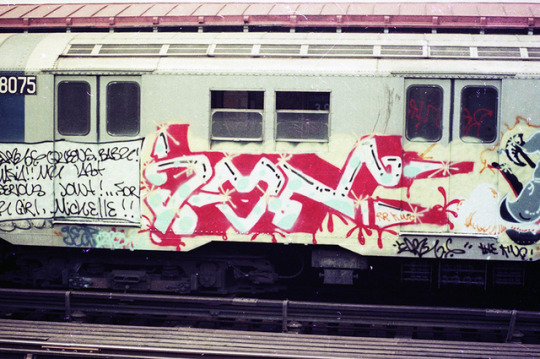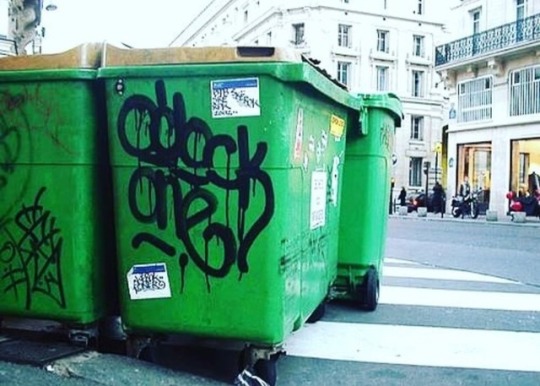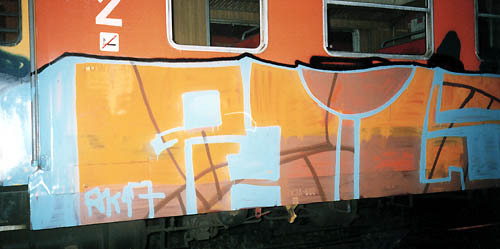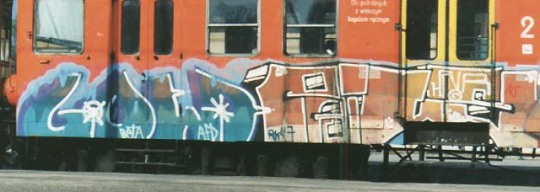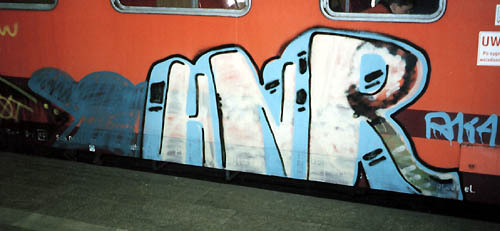Photo
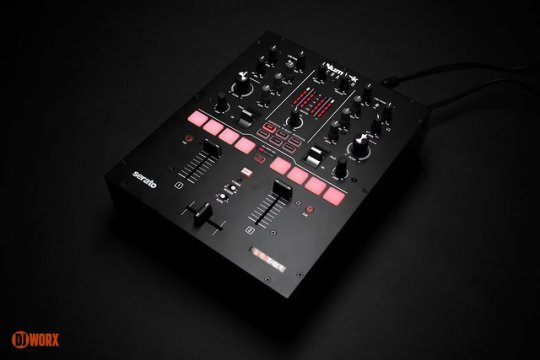
New Post has been published on https://djworx.com/exclusive-review-numark-scratch-serato-dj-pro-mixer/
EXCLUSIVE REVIEW: Numark Scratch Serato DJ Pro Mixer
LINK: Numark | PRICE: $499/€499/£419 | MANUAL: PDF
INTRODUCTION
“Want to do an exclusive review on our new mixer?” enquired Numark’s marketing team. Hmmm… not had one of those for a while. “Why not” I responded.
And verily it arrived. And it made me happy. You see, I’m quite the Numark fan. It’s a brand with a long heritage, stretching back before I became a DJ, and has continued to deliver things I like a lot since the dawn of skratchworx. The list of my personal favourites from the brand is long, but in recent times Numark has been quieter than normal. The stream of goodies from inMusic stablemates Denon DJ and Rane has been strong and largely excellent. But I’ve missed Numark, and am thankful that while it has adopted more of a budget position, it is still alive and kicking, and bringing products that people will want.
Which brings me to the Numark Scratch in front of me. While the top end of the scratch food chain has been populated with mixers of increasing price tags, it has continued to bother me that the once affordable scratch scene has a bar to entry that has spiralled out of control. So when I read “Serato” and “$499”, a wry smile appeared on my face. This is not the norm, and it makes me interested to see how this price level has been achieved. So let’s dig in.
IN A NUTSHELL
The Numark Scratch is a Serato DJ Pro fuelled 2 channel mixer. The name clearly indicates the target market, but it’s an ideal entry level DVS mixer for everyone. I’ll soon get to why.
BUT FIRST…
I’ve made it a policy that our reviews are all about our opinion. We don’t do walkthroughs or demos, because that’s not our role in the DJ industry. So it’s important that you pour over the materials provided by Numark such as the manual and introduction videos to find out what the Numark Scratch is supposed to do. And once you’ve done that, I’ll tell you how well I think it does it. Clear?
FIRST IMPRESSIONS
After 15 years doing this, I find that my first impressions are usually lasting throughout the period of a review. So…
Classic Numark
Small
Light
Better than the price tag might indicate
Serato DJ Pro mixers of late have been beasts of increasing (and dare is say unnecessary) complexity and size. So it’s nice to be presented with a Serato mixer that makes sense right out of the box. There has certainly been little need to dig into the manual to work out the stuff that should be immediately obvious. And. little digging into Serato DJ Pro preferences usually gives a few answers too. I find that the Numark Scratch is an uncomplicated mixer that does exactly what it looks like it should.
It has a subset of the core features of the current slew (DJM-S9, Mixars DUO, Rane Seventy Two, Reloop Elite) of Serato turntablist oriented mixers to distill down an affordable specification that ticks all the necessary boxes for the majority of users. Yes you want all the bells and whistles found on the aforementioned mixers, but need is a different matter.
Installation is simple — sign up at the Serato site, download the software, plug in, and you’re off. No serial numbers to deal with — just nice and simple as it should be. I have always liked this plug and play nature about Serato. And as far as Macs go there’s no additional drivers to install either. Can’t really comment on PCs.
Oh — the Numark Scratch doesn’t include vinyl, which is an odd choice. I see this as an entry level mixer, which means that the potential market would want a plug and play experience. But instead they have to splash out another £20 to get going. Given the colour scheme, a pair of reds in the box would have been preferable.
THE BASICS
We’ve been here many times before — it’s a metal chassis that’s of a lighter gauge than what I’ve been used to in recent times, if only because Rane and Denon DJ are a much sturdier proposition. I have no doubt that the Numark Scratch will take a beating, and not be quite so heavy in your rucksack.
This is a mixer of three distinct parts — the top 40% is hardware audio controls, the middle 20% is pure Serato DJ Pro controls, and the bottom 40% is faders.
The knobs are rubber with metal pots, and the chunky filters are also nutted to the faceplate. I like the more slimline knobs as they give a little more space around the controls. Aesthetic note — the grey knobs aren’t as light as the PR pics.
Also, being as thorough as I am, Chroma Caps and Coolor Caps fit, but the long pot stems mean that they sit above by a few more millimetres than I am happy with. I doubt that Numark or anyone else for that matter makes compatibility with 3rd party knobs a design priority though.
Meters are simple — just 4 red LEDs with a 5th white one to… indicate going into the red?. Wait what? Perhaps it means that the signal is white hot. Well if it didn’t, it does now. I’m perfectly happy with these small meters — as long as you see the white come on sometimes, you’ll be fine. For the details freaks, the channel meters are post-everything.
The loop button controls Serato DJ Pro’s looping features per deck. Press once to engage, turn to expand and contract, and press again to disengage. As a bonus, pressing shift lets you navigate the open library window with a press loading the selected track. Nice.
Now let’s get into some performance specifics.
FADERS
Being called the Numark Scratch does mean that at least the crossfader is going to be of primary importance here. And the faceplate is emblazoned with the ubiquitous Innofader logo (wish I’d devised for a 1 penny per product royalty deal when I designed that) which means that performance is guaranteed to strong and confidence high.
And it doesn’t disappoint. While initially concerned with a curve switch rather than a curve knob, I soon realised that when I use a mixer, the curve is either for set for mixing or scratching and nowhere in-between. So as long as the curve is sharp and the cut in distance is short (1mm out of the box), then I’m happy. And it is, so I am.
To keep the faceplate clean, Numark has given crossfader access via a plate under the mixer. This makes access easy, and means that the mini Innofader can stay in place should you feel the need to calibrate it.
The crossfader reverse is an essential feature for scratch DJs, but I find myself unhappy with the line fader implementation. No curves or reverses on the mixer, and only a curve preference in Serato DJ Pro preferences (2mm cut in). If possible, please add a line fader reverse Serato. I know it’s not just me that uses it.
Finally, updating faders. Well good news and bad news here — the access plate in the base shows that the supplied mini Innofader can be easily updated to a full body innofader Pro should you wish. I wouldn’t do it right away as I’m sure that the mini Innofader will give years of sterling service. But if you must, you can. The line faders, much like all other mixers, are soldered to the motherboard. I don’t think it’s a deal breaker for a mixer like this, and is more of an advisory.
PERFORMANCE PADS
When I talk about a subset of Serato DJ Pro features, it’s the buttons that I’m largely referring to. Instead of a regular 2×4 RGB matrix per channel, the Numark Scratch only gives a 1×4 strip, and in red only. The buttons are rubber and responsive, and support hot cues, sample play, and loop rolls i.e. just enough to keep most people happy. If you feel like you need more buttons, then that definitely marks you out as a power user, and you should be looking at more expensive options, or adding a third party controller.
I understand that the black and red colour scheme is an aesthetic choice, but non-RGB buttons is quite a letdown. The difference between mono and RGB LEDs is pennies, and not much more code to add for Serato either. It’s especially galling when the hot cues are shown in colour in Serato DJ Pro too.
When applying the worxdriver to the mixer, I did attempt to examine the pads inside the chassis, but they’re hidden, and there’s only so much screwdriver surgery that I’m willing to carry out in a product that isn’t mine to keep. We can only hope that the LEDs are RGB and might get activated in a future update.
EFFECTS
Despite appearances, the Numark Scratch effects aren’t embedded hardware effects such as those found on Pioneer DJ mixers. Instead they’re reserved for triggering Serato DJ Pro’s effects. They’re premapped to trigger echo, delay, flanger, reverb, version echo, and phaser. By default, and indeed every time you interact with the buttons, Serato DJ Pro switches to the 3 slot view and puts the selected effect in slot one. You can override these in Serato DJ Pro i.e. select different effects, the more advanced single effect option etc, but the hardware buttons override everything.
There’s a wet/dry control as well as an on/hold toggle like the Rane Seventy Two and S9.
I can hear a buzz of “yeah but what about” from the DJWORX community. And I’m deliriously happy to report that all effects are post fader. Perhaps now my many years of banging on about the utter pointlessness of pre-fader effects has finally been heeded. Bloody good work people.
Finally, each channel also gets a hi/low pass filter, serviced with a distinctive large knob. It’s a mild affair, and definitely not an overly aggressive squelchy filter. But it sounds very pleasing to my ears.
Summing up effects — the Numark Scratch gives you onboard control of Serato effects at a basic level, and frankly where effects are concerned, less is more.
A NOTE ABOUT PC MODE
Out of the box, the Numark Scratch is configured for Serato DJ Pro. But it isn’t limited to just that software. When switched to PC mode, the entire mixer is mappable to anything with MIDI learn.
Curiously, bar mic tone/gain and headphone gain, it’s a complete takeover too. I had expected to configure just audio channels to work with different software and have hardware features such as faders and EQ just work. But literally everything has to be mapped to your choice of software. The good news is that I was able to get the basics (faders and EQs plus some random others for test purposes) mapped and DVS working with Traktor Pro 3, VirtualDJ, Cross DJ Pro 4, and rekordbox DVS, as well as using it as a control surface for djay Pro 2 for Mac. And given that the features are all readily available in all software, it’s probable that the mapping you make for your choice of software will be accurate to the intended Serato DJ Pro implementation, which is not always the case for more complex controllers.
Interesting side note — the effects appear to be post fader in other software too.
Disclaimer — please appreciate that I did a very quick mapping to prove the principle in each software. Do not take my words to mean that it definitely works with everything including Serato DJ Pro. It’s only officially supported in Serato DJ Pro anyway.
INS AND OUTS
Given the essentials approach take with the Numark Scratch, there are absolutely no surprises here, although it’s nice to see booth out on there. This isn’t a product that I would expect to see it on. Mic input is welcome, but some might miss the lack of dedicated recording output. You can probably hang something out of the booth ports, but testing the Serato record feature shows that the master out (post fader effects as well) is captured perfectly.
I was sad to see that split cueing hadn’t been implemented. Digging into Serato DJ Pro preferences showed a greyed out button. Bugger. I suspect it’s outside of Serato’s domain though.
For the scratch nerds, there’s no send and return loop or foot pedal input. You’re in a much smaller and more demanding demographic that more expensive mixers are suited for. Some will complain, but their omission is not a problem for me.
IN USE
Out of the box (well once you’ve added your own control vinyl that is), the experience is first class. Everything works as it should and delivers a complete experience for the target audience. On a personal level, I miss the RGB buttons as I tend to colour code my hot cues to be red=bass drum/yellow=snare etc. That visual reference is very useful for me. And the lack of line fader reverse is a hard one for me to get used to, and by hard I mean relearn an entire technique.
But there’s so much to be happy about, especially for the price. It’s amazing that normally cash strapped turntablists can get into Serato DVS for not a huge amount of money at last.
Two observations — if you’re wanting to use the Numark Scratch primarily as a two channel mixer without software, you’ll find that the entire middle section is quite useless to you, and makes the Numark Scratch into a very expensive two channel mixer without effects. Make sure that you don’t pay for things you’re never going to use.
Also, with an increasing amount of functionality being a symbiosis of hardware and software (think post fader effects), I sense that external interfaces will be less of a thing in the future. Serato seems to be quite clear about building entire mixers with their partners these days. I’m not saying that you’ll never see an SL2/¾ update or similar, but I definitely wouldn’t count on it. Sorry Dan.
SUMMING UP
The recent offerings of this type have left me both overwhelmed (so many features) and underwhelmed (but does it all have real value?) at the same time. As innovation is injected into this type of product, the price tag skyrockets, and the actual usefulness to the wider masses diminishes.
So it’s nice to see a mixer that does maybe 90% of what’s needed (as opposed to wanted) for a fraction of the established übermixers’ price tags. Yes I would like more buttons with more colours. And yes I would like more control over line faders. But the Numark Scratch is a mixer that I could happily use for the rest of my DJing days, and that includes scratching and mixing. I rocked Hip Hop and Acid House parties with Realistic mixers without EQs and crossfaders, so this is absolute luxury in comparison.
Despite what their head tells them, the needs of most DJs are simple. But it’s all too easy to have a GAS attack and throw money at the screen, only to realise that a good deal of that functionality that’s been crammed into the expensive chassis will remain unused. So while the industry wants to sell £1600 scratch mixers, and social media would have you believe that every turntablist has an S9 or Seventy Two, the chances are that they’ll shift the Numark Scratch in greater quantities and make more money to the majority that don’t. Importantly, Serato will grab people on the entry level curve and hopefully keep them as they progress.
When reviewing anything, our minds naturally turn to competitive products. A couple of years ago, Pioneer DJ and Serato partnered up to make the DJM-S3, a Serato DJ version of the rekordbox based DJM-250mk2 with a £499 price tag. At the time, I commented that as far as a beginner looking at getting into DVS based DJing goes, the £200 extra on the S3 over the 250mk2 simply wasn’t worth it. But the price of the Numark Scratch is better, and is £120 more than the 250mk2, rather than £200.
And it’s important not to forget the Traktor Kontrol Z2 mixer. It comes with Traktor DJ 3 in the box along with vinyl and full colour RGB buttons, and can be had for between £410-450 if you shop around. This should definitely be on the shopping list for people whose heads have been turned by the Numark Scratch.
So there are definitely DVS alternatives that beginners should look at. That said, we cannot escape the fact that Serato DJ Pro is significantly more established with turntablists than any other software. So following the Serato path is currently the much safer bet. And £419 is still a good price to get a mixer with Serato DJ Pro, a mini Innofader, and post fader effects.
But while officially for Serato DJ Pro, it’s clear that with a little bit of work, the Numark Scratch can be used with everything. Those walls that divided the software camps are beginning to fall, perhaps not officially but if you’re willing to have a dabble (or download somebody else’s mappings), you should* be able to get the Numark Scratch to work with all DVS software.
*Disclaimer — just reiterating the fact that I did a quick test, and got the basics working with some mapping. But do not take this to mean that the Numark Scratch will definitely work fully and completely with anything but Serato DJ Pro. I know how the internet works after 15 years.
Finishing up, the Numark Scratch only pushes one envelope, and that’s the price to features ratio. It does nothing that hasn’t been seen before, but what it does do is give an affordable path into the bigger wider world of modern turntablism. Importantly, it does it very well indeed.
GALLERY
#gallery-1 margin: auto; #gallery-1 .gallery-item float: left; margin-top: 10px; text-align: center; width: 25%; #gallery-1 img border: 2px solid #cfcfcf; #gallery-1 .gallery-caption margin-left: 0; /* see gallery_shortcode() in wp-includes/media.php */
EXCLUSIVE REVIEW: Numark Scratch Serato DJ Pro Mixer
Features8
Ease of use9
Quality9
Value for money9
PROS
A solid Serato based DVS experience
A wealth of features
Great price for a Serato DJ Pro mixer
Mini Innofader
Post fader Serato effects
CONS
No control vinyl
Single colour pads
Lacking line fader reverse
8.8
SERATO SUBSET IN A NUMARK BOX
THE BOTTOM LINE
The Numark Scratch is a mixer for everyone, and everyone should take a look when shopping for a new mixer, their next mixer, or just a backup mixer. It’ll perform well for all styles of DJs, but turntablists will benefit the most.
2 notes
·
View notes
Photo


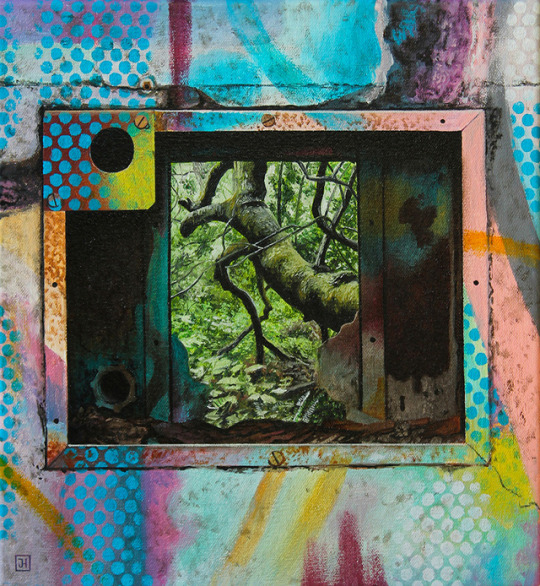

Crumbling Buildings and Graffiti-Covered Walls Are Meticulously Documented in Oil Paintings by Jessica Hess
590 notes
·
View notes
Text
Get cash when you need it.expanding your business.playing catchup,simple no obligation
#businessloans#smallbusiness#cash#capital#finance#texas#dallas#austin#florida#detroit#canada#atlanta#houston#htown
0 notes
Video
youtube
GRAFF TV: DART
This episode of Graff TV we feature Swedish graffiti writer DART
CLICK TO SUBSCRIBE: http://bit.ly/1afX9bJ
PARTNER: http://www.molotow.com
7 notes
·
View notes
Video
Remio (@rrremio) rolls up to a wall like…
#remio #handstyle #graffiti
55 notes
·
View notes
